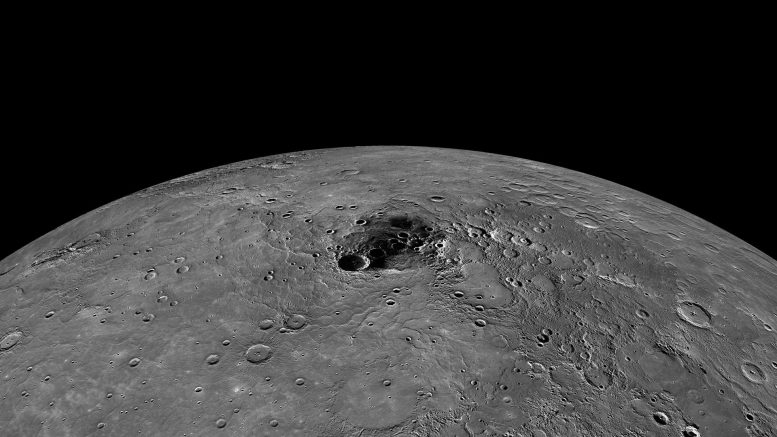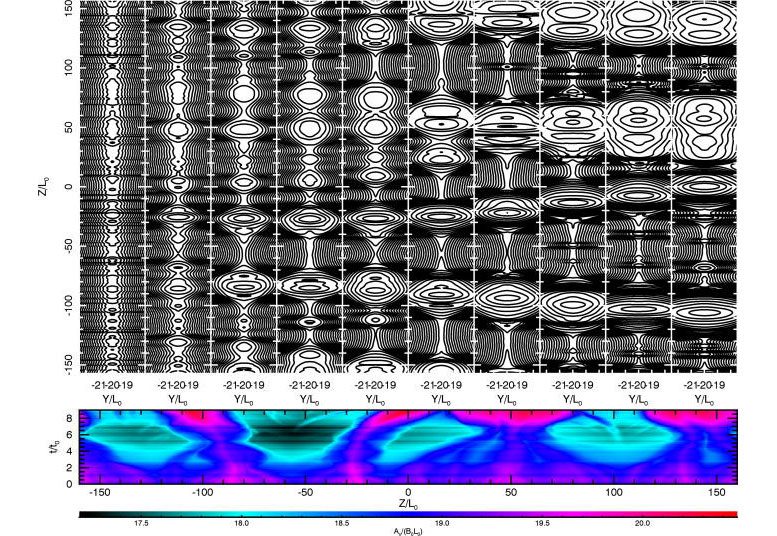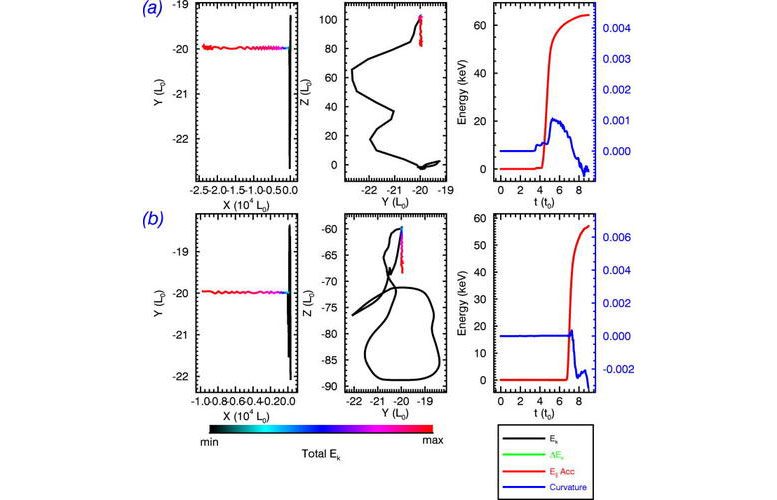
Theoretical physicists used simulations to explain the unusual readings collected in 2009 by the Mercury Surface, Space Environment, Geochemistry, and Ranging (MESSENGER) mission. The origin of energetic electrons detected in Mercury’s magnetic tail has puzzled scientists. This new study, appearing in Physics of Plasmas, from AIP Publishing, provides a possible solution to how these energetic electrons form.
Magnetic material’s flow inside a planet creates a global magnetic field. In Mercury, and in Earth, liquid metal currents in the planetary cores induce the planets’ magnetic fields. These fields vary in shape, size, angle, and strength from planet to planet, but are all important for protecting planets from solar particles.

Solar wind blasts planets with radiation and causes magnetic substorms, which we sometimes see on Earth as the northern lights. Magnetic tails or magnetotails form when intense radiation pressure from solar winds “pushes” on the planet’s magnetic fields. These tails form on the nighttime side of the planet, facing away from the sun. On Mercury, magnetic substorms in the tail are bigger and more rapid than those observed on Earth.
Mercury’s magnetic field is 100 times weaker than Earth’s, so it surprised physicists that MESSENGER detected signs of energetic electrons in the planet’s magnetic tail — the Hermean magnetotail. “We wanted to find out why the satellite found energetic particles,” said Xiaowei Zhou, an author of the study.

Magnetohydrodynamic simulations and test particle calculations showed that plasmoids — distinct magnetic structures that encompass plasma — are generated during magnetic reconnection. These plasmoids accelerate energetic electrons. The simulation results are supported by MESSENGER measurements of plasmoid species and plasmoid reconnection in the Hermean magnetotail.
Fig. 4(a) multimedia view and Fig. 4(b) multimedia view are for the (a) and (b) electrons, respectively]. In the animations, the first column shows the location evolution of the electron (red cross) in the CS, and the second column is similar to the panels in the third column of Fig. 4. Vertical black dashed line in the second column of the animations corresponds to the time of the first column.
The researchers also used a mean-turbulence model to describe the turbulence of subgrid-scale physical processes. Acceleration processes were scaled to parameters that mimic characteristic conditions reported from the Hermean magnetotail. The simulations showed that in these conditions, turbulent plasmoid reconnection could be responsible for electron acceleration. “We also showed that turbulence enhances reconnection by increasing the reconnection rate,” Zhou said.
The team’s model predicts the upper limits for turbulent plasmoid reconnection and the corresponding electron acceleration. The Bepi-Colombo mission, due to launch October 2018, will test these predictions. The Bepi-Colombo satellites, built to withstand the harsh, hot environment near the sun, will be inserted into Mercury’s orbit in 2025 for one Earth year to transmit observations from the planet.
Fig. 4(a) multimedia view and Fig. 4(b) multimedia view are for the (a) and (b) electrons, respectively]. In the animations, the first column shows the location evolution of the electron (red cross) in the CS, and the second column is similar to the panels in the third column of Fig. 4. Vertical black dashed line in the second column of the animations corresponds to the time of the first column.
“Previous satellites could not test the high energies from electrons and one aim of this mission is to measure the energetic particles from the Hermean magnetotail with new detector technology,” Zhou said. With this new technology, the researchers hope to gain a more detailed subscale view of the effects of turbulence.
Reference: “Electron acceleration by turbulent plasmoid reconnection” by X. Zhou, J. Büchner, F. Widmer and P. A. Muñoz, 17 April 2018, Physics of Plasmas.
DOI: 10.1063/1.5011013